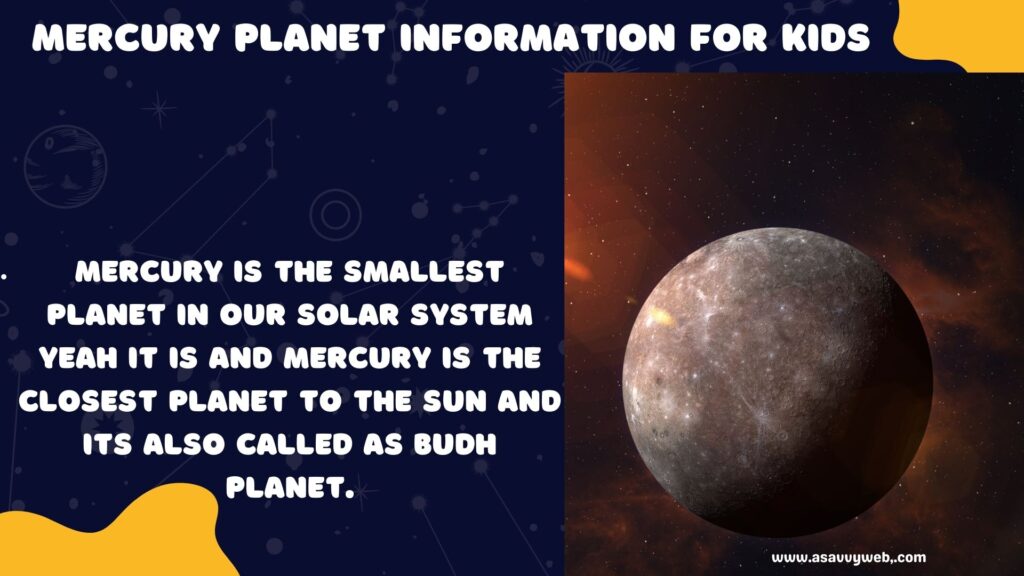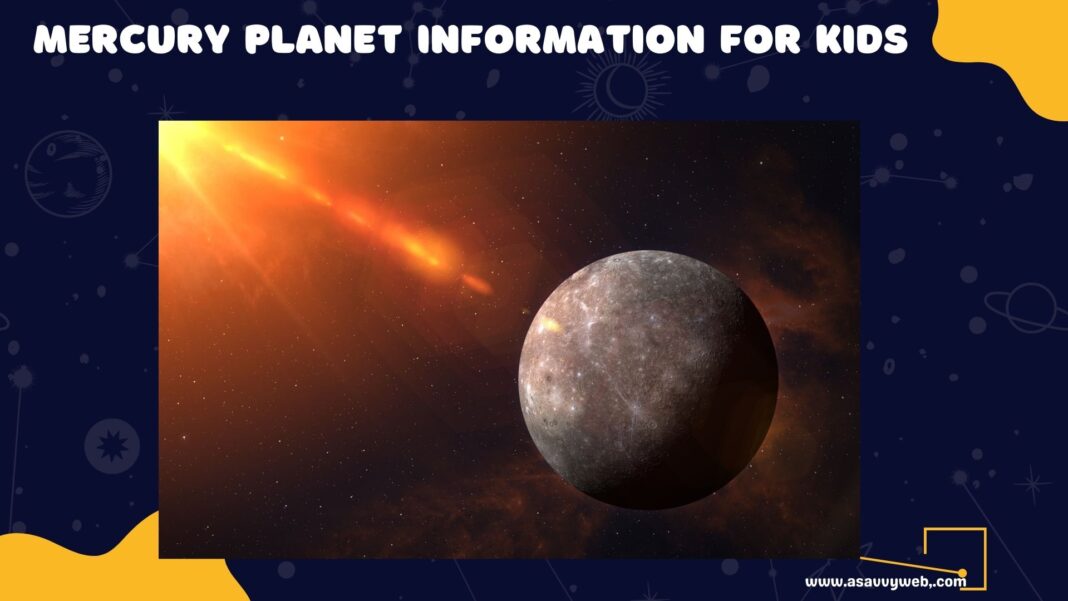Mercury is the smallest planet in our solar system yeah it is and mercury is the closest planet to the sun and its also called as Budh Planet.
Let’s see in detail about this smallest mercury planet information and its characteristic.

Mercury planet Information and Its Characteristics :
Mercury once believed to be two separate stars and it’s barely larger than the moon and its surface temperatures can go from scorching 800 degree Fahrenheit to a 300 degree frigid 300 degrees below zero and its 48 Million miles from earth.
Mercury is dangerously close to the sun and making it possibly the most difficult of the eight planets to reach and there are lot of mysteries and characteristics of tiny mercury planet facts.
Mercury Planet Early Observations:
Observations of Mercury as recorded earlier are from MulApin and made by an Assyrians astronomers 14th century BC, Babylonian records of mercury date back to the 1st Millennium BC and they also called the planet Nabu after the messenger to the gods in their mythology.
Romans later named the planet Mercury the messenger among the gods and protector of travelers and moniker.
Also Read:
1) 15 Interesting Mercury Planet Facts and Details
2) Can you live on Mercury Planet Surface?
3) Mercury Planet Surface Made: Atmosphere, Caloris Basin, Volcanic
4) Caloris Basin Information or Mercury Carolis Plantia Characteristics: Gravity, Formation
5) 8 Planets of solar system and New Planets
Mercury Planet Early Orbit:
Mercury rises across the sky orbiting the sun every 88 days far faster than any other planet. In spite of its short year, a single day on mercury equals almost 59 earth days.
Mercury is the smallest of four terrestrial planets even smaller than Ganymede and Titan, moons of Saturn and Jupiter. Yet Mercury is extremely dense the second dense planet in the solar system after Earth.
Mercury Planet Size:
Mercury planet size of radius 2,440 Km and diameter of 3,032 miles (4879 Km) which makes more than one third size of the Earth if earth is a football then planet earth would be of golf ball.
The Mercury Planet is thought to be more than two-thirds metallic and just a third silicate or rock and its molten core has a higher iron content than any other major planet in the solar system and the core makes up the larger portion of its mass 42%.
Mercury landscape is similar to our moon with extensive mauri or plain and marked by deep craters, scarring left behind millions of bombardment by comets and other celestial debris.
With its atmosphere so weak its barely detectable comets and other space debris headed for mercury don’t burn up on their way down as they do on earth, infact they are barely slowed at all, so any meteor or asteroid pulled into the planets orbit will eventually smash into this rocky world.
One crater the Caloris Basin 800 miles in diameter making it one of the largest impact sights in the solar system.
Caloris Basin is the largest feature on the surface if Mercury and it’s so large in fact the scientist believe the collision actually reshaped the topography on the opposite side of the planet.
Like the moon mercury has no plate tectonics and is geologically inactive, Mercury is so small ad mercury gravity is so weak that it is unable to hold on to an atmosphere for an significant length of time distinct earth and the huge gas giants of the outer solar system.
Mercury Planet Lacks of Atmosphere :
Mercury lacks of an atmosphere means it essentially has no weather no gasses to create winds or clouds to blow across the horizon and being two-third closer to the sun is earth means sunlight on Mercury is 6.5 times as intense and it’s so intense in effect that some astronomers believe it has actually eroded the mercury surface of planet for billions of years but despite this intense heat but ice may actually be found in the deep craters at the planets north and south poles and radar data has shown the water permanently frozen may exists in the area shaded from the sun.
Even with water found on mercury without an atmosphere life is all about impossible.
Mercury Planet Messenger Space Craft Images and Views:
Mercury in Galactic terms is very close to earth surprisingly little is known about this planet orbiting so close to the sun makes it extremely difficult to study and worse reaching mercury means fighting the pole of the suns gravity in fact to send a spaceship there requires as much rocket fuel as sending a probe in the other direction as far as the very edge of the solar system.
Even with these difficulties in 1974 the American Mariner 10 reached mercury, this space craft made three close approaches, one which even took it within 200 miles of the planets rocky terrain and it succeeded in photographing almost half of the mercury planet’s surface.
The Next Mission to mercury the NASA Messenger made its first fly by in January 2008, this probe using high resolution cameras that did not even exist in 1970s and is mapping areas of the planet never before seen.
Messenger will continue making flybys of mercury until 2011 and after 2011 the spacecraft will enter a permanent orbit with mercury and continues to send back valuable date for years to come.
The Determination of NASA and the world of astronomy may mean that soon the great mysteries of our tiny neighbor. The Planet named for the messenger of the Romans Gods will finally be revealed to science.

